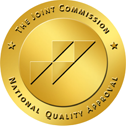
The road to addiction is different for every person. Some people take their time while others go from zero to 60 in a short period of time. No matter how long your journey is, most rehabilitation counselors agree that there are four main stages of drug addiction: experimentation, regular use, risky use/abuse, and drug addiction and dependency. Not everyone in the first two stages will develop a drug addiction, but individuals in the third stage of drug abuse are very likely to progress into full-blown addicts. Here’s a closer look at the four main stages of drug addiction.
The Stages of Drug Addiction
Stage 1: Experimentation
Experimentation is defined as the voluntary use of drugs without experiencing any negative social or legal consequences. For many, experimenting may occur once or several times recreationally or to help the individual cope with a problem. For many, experimentation can occur without any desire to continue using the drug. For others, it can start to become a problem when it moves into the next stage of addiction: regular use.
Stage 2: Regular Use
Some people will be able to enter the stage of regular use without developing a dependence or addiction. These people will be able to stop the drug use on their own. The problem with regular use is that the risk for substance abuse greatly increases during this stage. It also increases risky behaviors such as driving under the influence, unexplained violence, and symptoms of depression and anxiety.
Stage 3: Risky Use/Abuse
The line between regular use and risky use/abuse is a very thin one, but is usually defined as continued use of drugs in spite of severe social and legal consequences. What might have begun as a temporary form of escape can quickly lead to more serious problems. This is the stage where the warning signs of addiction will begin to appear: craving, preoccupation with the drug, and symptoms of depression, irritability and fatigue if the drug is not used.
Stage 4: Drug Addiction and Dependency
Physical dependence on a drug is often intertwined with addiction. Characteristics of dependence and drug addiction include withdrawal symptoms and compulsive use of the drug despite severe negative consequences to his or her relationships, physical and mental health, personal finances, job security and even having a criminal record.
Drug Addiction Treatment
No matter which stage of drug use you’re in, it’s important to seek help right away, especially if you’ve reached the stage where you are unable to stop using drugs on your own. Addiction is a progressive illness that, if left untreated, only gets worse. Thankfully, addiction is also a treatable illness. There are many forms of drug addiction treatment, including inpatient treatment, outpatient treatment, 12-Step programs and holistic therapies.
One thing to consider when choosing a drug addiction program is if it offers dual diagnosis treatment. Oftentimes a person will develop a drug addiction after trying to self-medicate symptoms of a mental illness. Other times symptoms of mental illness, such as depression and anxiety, will develop due to chronic drug use. The result is a never-ending cycle that is difficult to break without treating both the drug addiction and the mental illness. Proper assessment of a dual diagnosis can help you in any stage of drug use and addiction.




